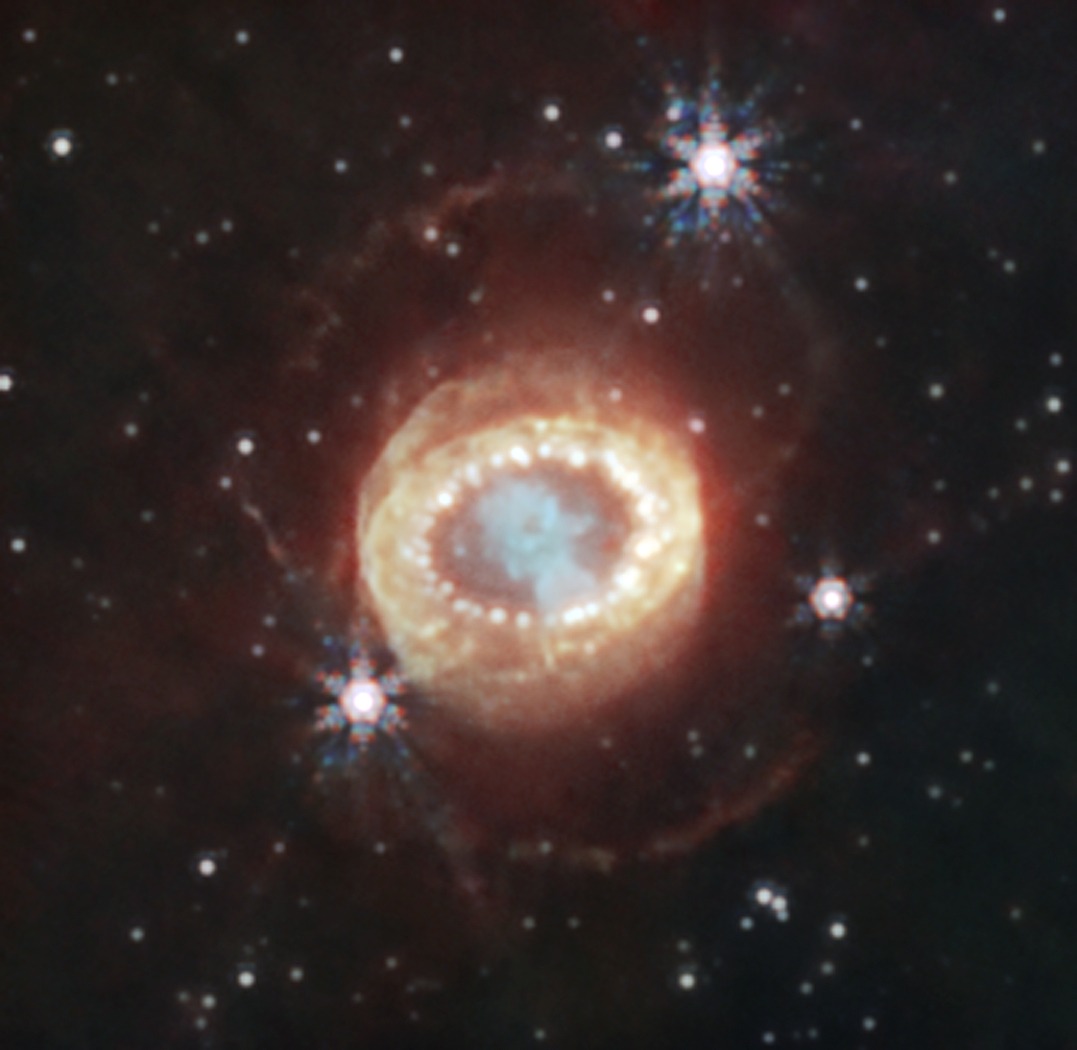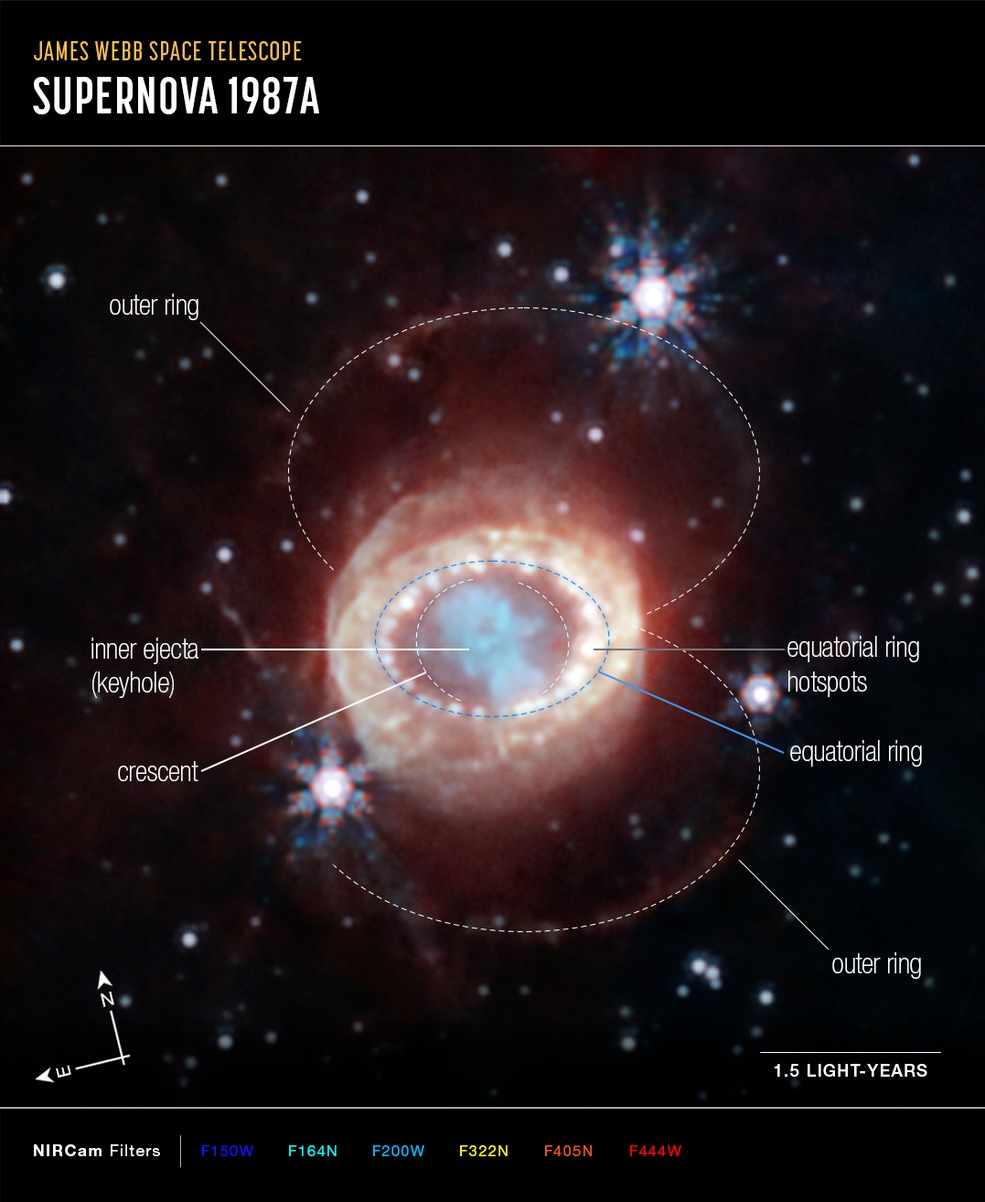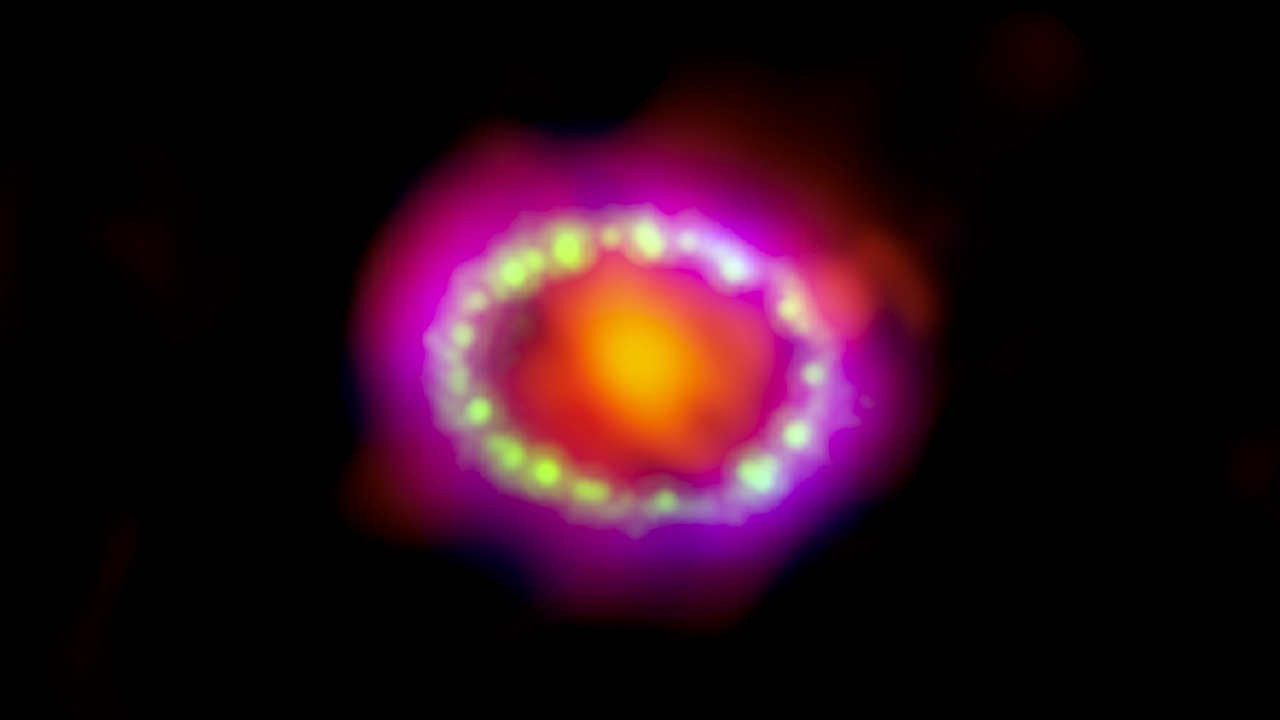One of the satellite galaxies of the Milky Way, the Large Magellanic Cloud, is known as the birthplace of one of the most spectacular supernovae in recent history of space research. The supernova SN 1987A originated from the explosion of a massive star when its nuclear fuel was depleted, marking the end of its life and releasing an immense amount of energy. This explosion created extraordinary structures around the star, scattering dust and gas billions of kilometers in all directions.

Supernova SN 1987A was first observed in 1987. Since then, it has left behind a ring-like structure formed by the expansion of a shockwave. The ring was notable for its brightness. Now, the James Webb Space Telescope has provided an opportunity to take a closer look at this stunning structure.
The image of SN 1987A was captured using the Near Infrared Camera (NIRCam) instrument on board the James Webb telescope. In the image, the central structure resembles a keyhole-shaped slit filled with dust and gas ejected from the star during its brilliant demise. The dust at the center of the remnant is so dense that even infrared radiation cannot penetrate it, forming a dark patch.

The image also reveals rings of material surrounding the center. These rings are adorned with bright points that resulted from the action of a shockwave formed by the collision of the supernova’s explosion products with previously expelled material.
During its existence, SN 1987A has been the subject of numerous observations conducted by various observatories, including the Hubble Space Telescope, the Chandra X-ray Observatory, and ground-based telescopes such as the Atacama Large Millimeter/submillimeter Array (ALMA).

The image above combines data from these three observatories, working in optical, X-ray, and radio wavelengths, respectively. It shows the same structures as the James Webb image but in less detail.
These findings highlight the importance of the James Webb instrument for conducting detailed investigations of well-known objects in space.
Previously, we reported on how James Webb spotted the farthest star in the universe.
Source: NASA
